The late Italian count whose eccentric tastes dazzled Mick Jagger and the European aristocracy
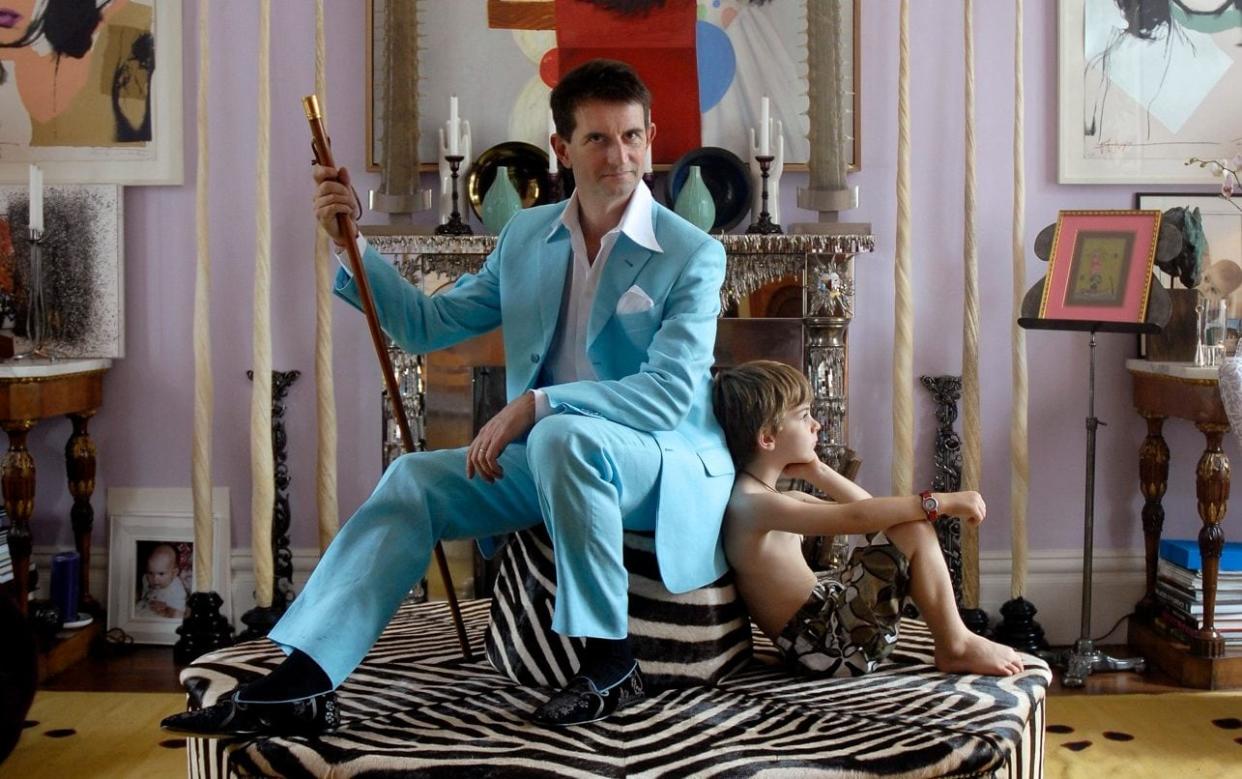
- Oops!Something went wrong.Please try again later.
- Oops!Something went wrong.Please try again later.
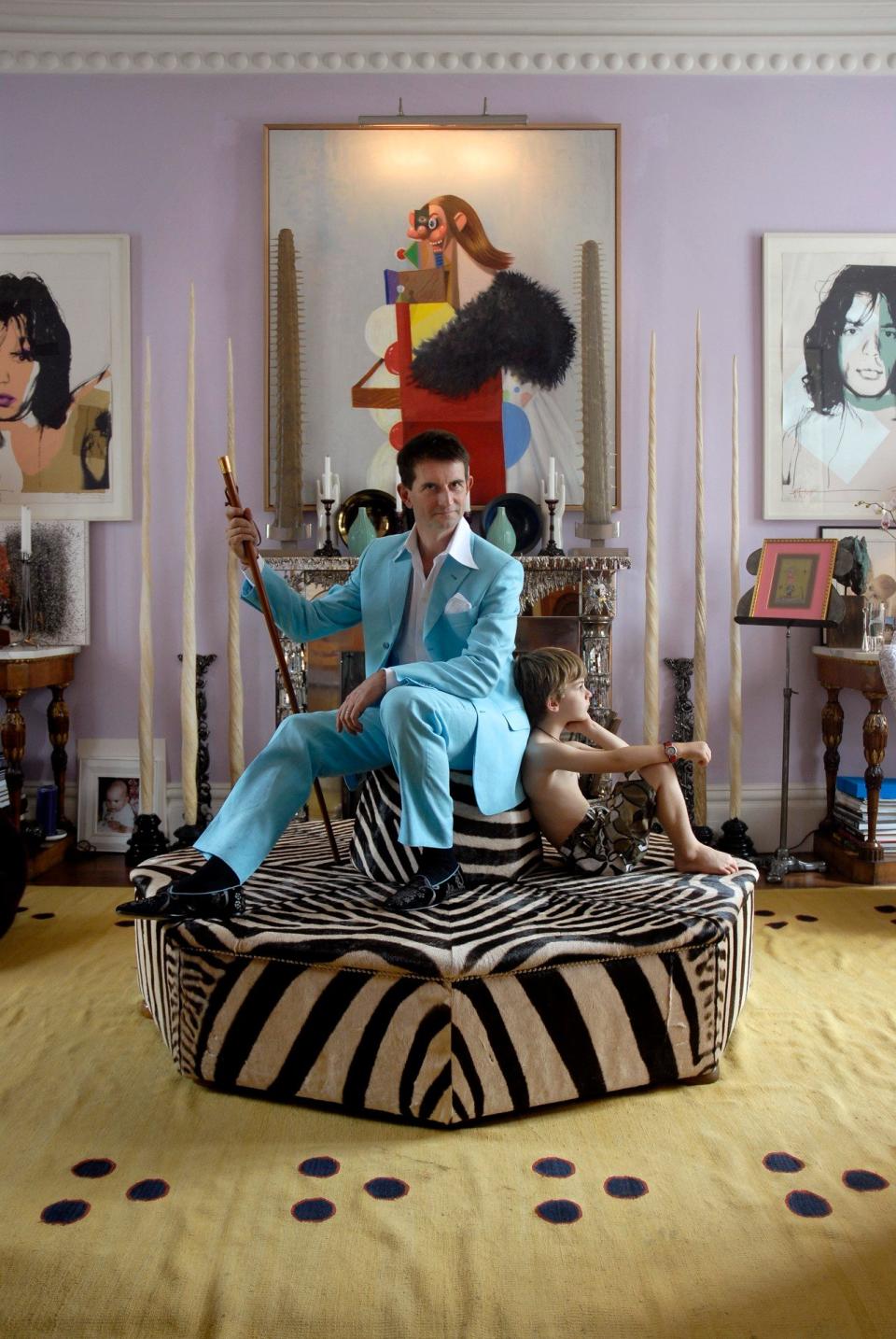
The night before I am due to meet Princess Maria-Theodora (Dora) Loewenstein, to talk about the auction of her late ex-husband’s collection, I bump into an Italian friend of his, who describes him as if he were a dandy stepping out the pages of Proust: ‘He was a consummate aesthete and an incredible collector and let me tell you two things about his family,’ he says. ‘They are so old they are in Dante, the Four Seasons in Florence was once their house.’
Count Manfredi della Gherardesca, interior decorator, art dealer, purveyor of taste, bridger of old and new worlds, died unexpectedly aged 60 nearly two years ago at his home in Italy, leaving his ex-wife and two children with the eventual responsibility of sorting out a labyrinthine complexity of possessions, both beautiful and bizarre. Many of these are in the Dreweatts sale, Alchemy of Design: The Collection of Count Manfredi della Gherardesca, later this month. Belgian hot chocolate pots, marble Capricorns like the ones in the Boboli Gardens, Fornasetti chairs, pheasants and poodles and terracotta portrait medallions and... There is so much muchness here that even a committed maximalist may need a lie down.
The Count was an exuberant peacock on the social-meets-art scene, with a global address book and connections everywhere. A video made for the sale sees the Obama-era White House decorator Michael S Smith talking of his ‘devilish humour’ and dash of rock and roll, and the effervescent art dealer Ben Brown of his ‘200 per cent Italian-ness’ and erudition. His children recall, ‘Our baby rooms were hung from top to toe with Brunelleschi watercolours, which were charming and evocative of childhood fantasy.’
‘An antique lobster claw fashioned into a gunpowder holder for a musket’ could catch his eye along with contemporary art, says his son Aliotto. In the catalogue, Jeff Koons says, ‘His aesthetics were clear and sharpened,’ and Lady Getty remembers ‘a man from a more refined and romantic age, straight out of a Florentine painting of the Cinquecento’.
Mick Jagger writes the foreword: ‘One of Manfredi’s many charms was his joy of discovery, be it places, people or art. Manfredi’s taste can be called eclectic or even bohemian, but it’s really just being confident about what you like. You only had to visit one of Manfredi’s houses to appreciate his sense of style and decor. I spent some months at Castello di Castagneto [during lockdown], Manfredi’s family seat in Italy, where I became more familiar with how profound his knowledge and connection with the history of art was. Looking over this catalogue of Manfredi’s collection, we can all see the breadth of his taste and talent.’ (The Princess’s father, the late Prince Rupert Loewenstein – the title is Bavarian – was the Rolling Stones’ long-term financial manager.)
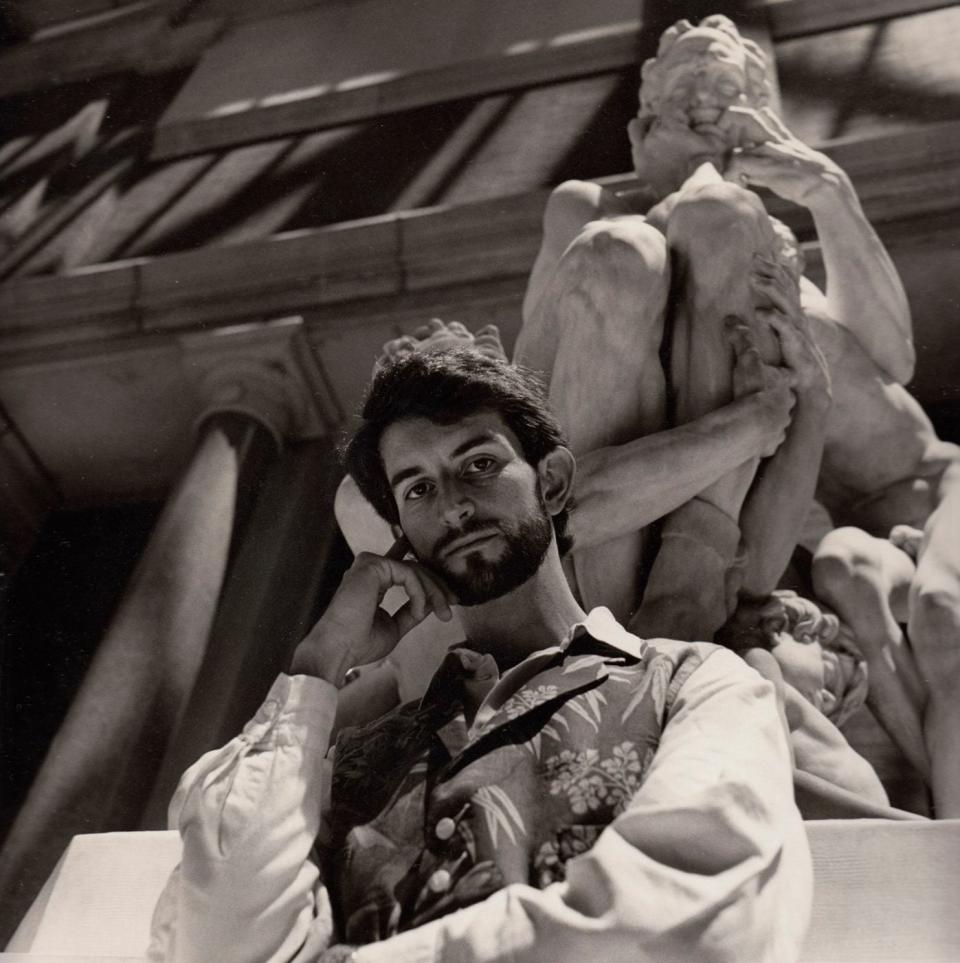
The family home, which is now the Princess’s, is a double-fronted house in North Kensington that, once past a pair of glorious budding magnolias, is indeed an explosion of colour and confidence. One exception to the lightness is the dining room, which is dark, wood, Pre-Raphaelite in tone, whereas the sitting room is all lilac walls and Grayson Perry and silver and nowish.
The Princess, a charismatic and entrepreneurial sort, will explain all, as she sits on a velvet sofa, a mom cushion next to her, with a suzani-covered ottoman piled high with art books, family photographs and butterflies in glass all around her. She has the responsibility of sorting out the estate in Tuscany as the children are young: ‘It’s Napoleonic Code [of inheritance], so they share everything with their cousins and my brother-in-law; and nothing was really planned, obviously, it’s nearly two years on. It is still a lot of work.’ (Manfredi had a brother, Count Gaddo, who is friends with Sarah Ferguson, and a sister, Sibilla.)
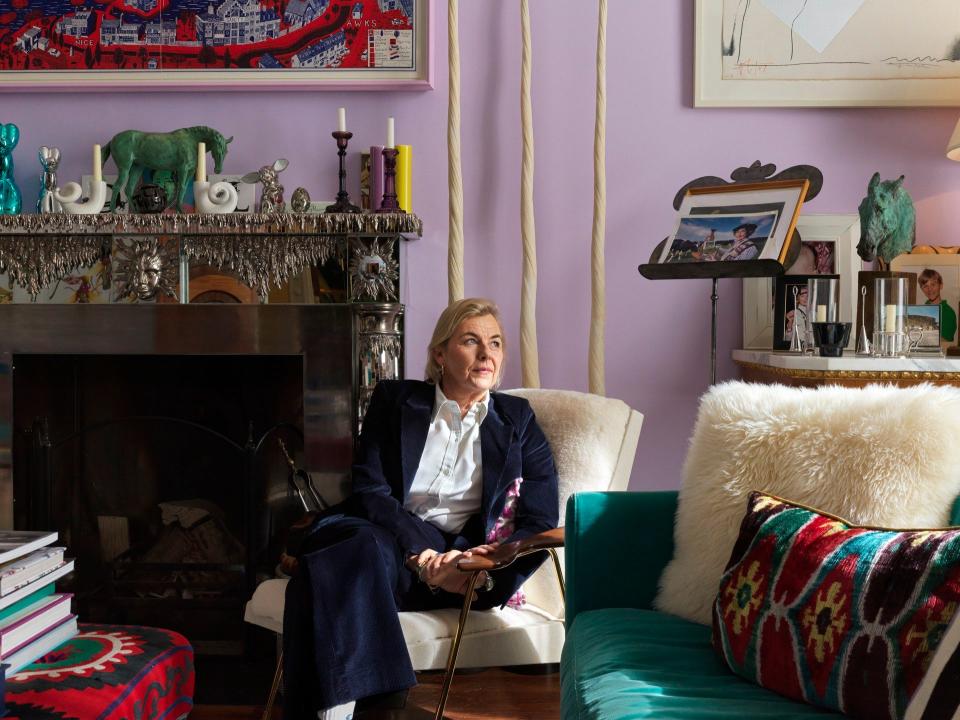
Dora and Manfredi first met in 1989 at a coming-out party in Seville for Olga and Alexandra of Greece (daughters of Prince Philip’s first cousin, Prince Michael of Greece and Denmark). She was working in advertising in Paris with a view to getting into film, although she says, ‘My dad sort of hooked me out because he didn’t really like the world of film himself. So he said come and work with him.’ Manfredi, then living in New York, was ‘in a group with Omer Koç [Turkish tycoon and art collector]. We became friends, but nothing more.’ He moved to London as an art advisor with Citibank. They saw each other on and off… until he asked her to join a young committee at the Royal Academy. ‘We sort of saw each other quite a lot then. Time went by. I had another boyfriend and he – I don’t know what he was up to.’
They re-met when she asked him to a dinner party at her parents’ house in Petersham, as her mother didn’t want anyone English there. She was going on a road trip through Italy with her friend Georgia Channon (granddaughter of the diarist Chips), and he asked them to stay for the Palio horse race. Once there, ‘she said, “I think he really likes you.” I said, “Don’t be so stupid. I’ve known him for years.” And that must have just sown a seed. It went from there. So eight or nine years after we first met, we got together and married a couple of years later.’ They married at the Brompton Oratory in 1998, but Dora now says it was ‘basically my father’s wedding rather than mine. He was so overexcited. Because both my brothers obviously are not married as they are in the Church [both are Catholic priests]. So it was his one chance. I didn’t have much choice.
‘It was an enormous production. The Brompton Oratory was full… probably about a thousand people.’ They included the Duke and Duchess of Kent, Lady Helen Taylor, the Jaggers (Jerry Hall was holding baby Gabriel). Did she enjoy it? ‘I always loved to party. So yes.’ Princess Dora, who was by now an events organiser par excellence, planned the whole thing herself. She and her mother went to Paris to organise the Lacroix dress and going-away outfit; a honeymoon in Africa followed. However, she did notice that her new husband ‘had all these appointments booked into his diary (he was by then working at Sotheby’s) when we were on our honeymoon.’ What then seemed scatty, Dora now thinks was undiagnosed ADHD. ‘All of that dimension started quite early on.’
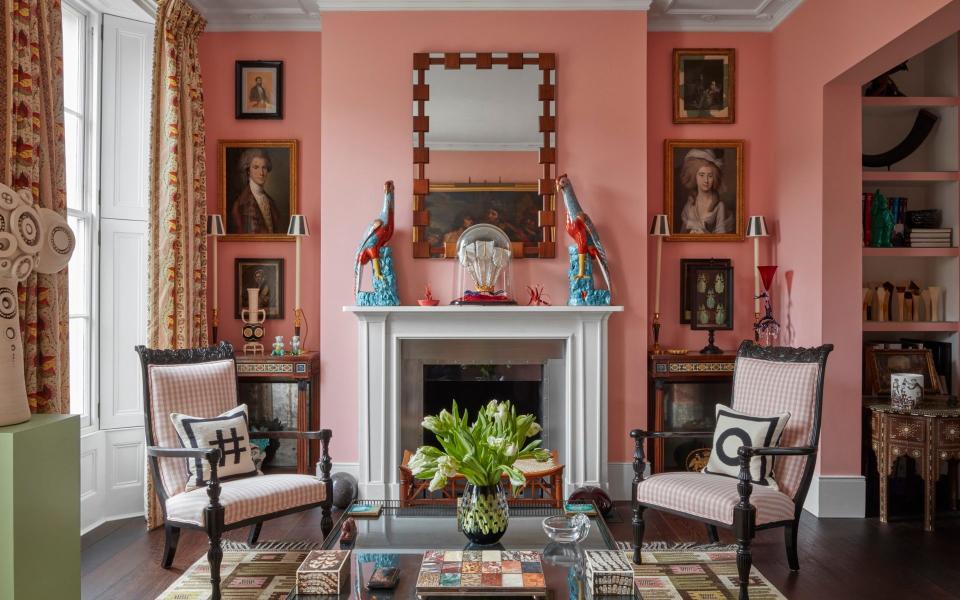

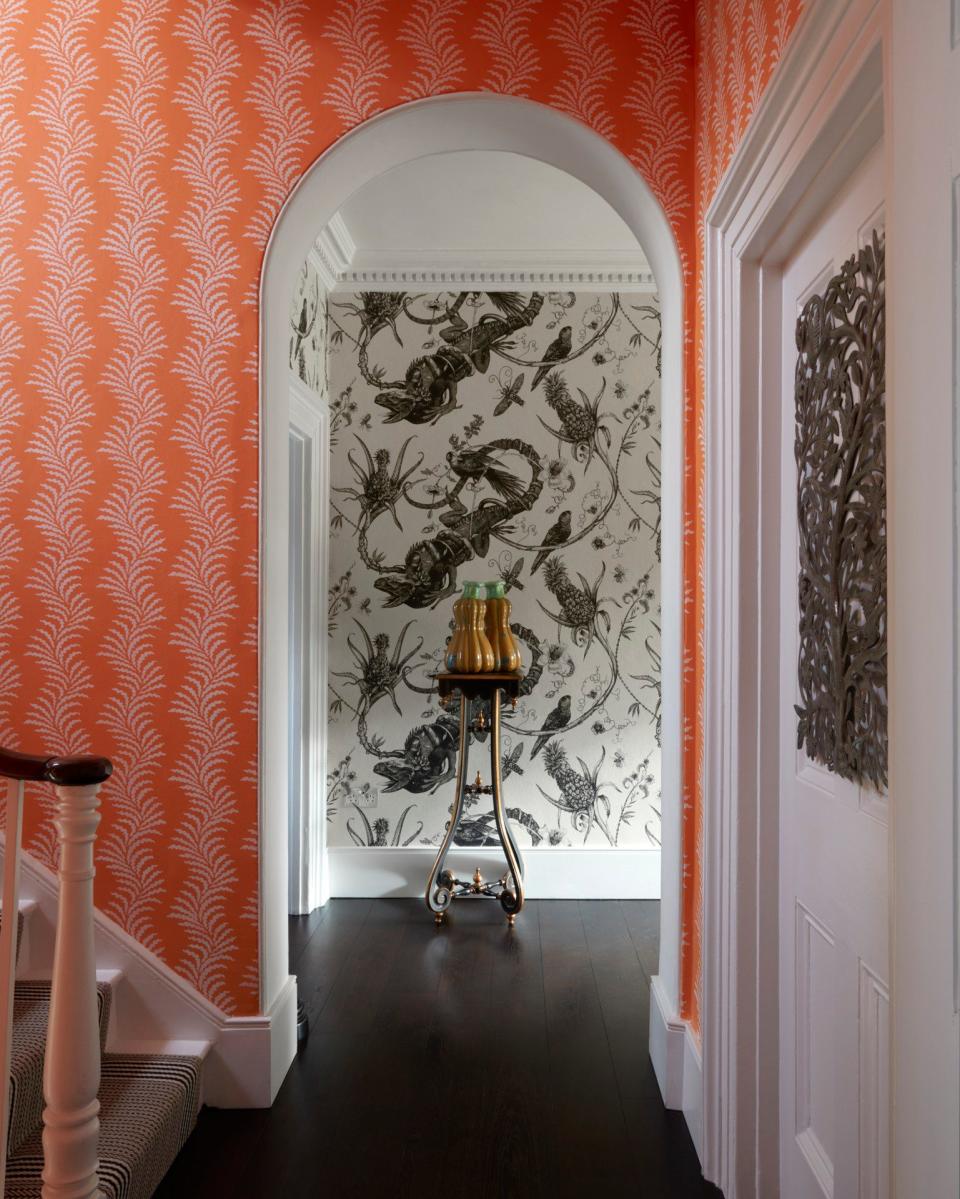
They moved into their house a week before Aliotto was born, in August 2000. Manfredi and an Italian architect friend realigned the doors in the drawing room; the frieze was copied from Sir John Soane’s Museum: ‘All of those things were very important to him.’ Because they both had strong views, Dora’s mother advised them to ‘pick rooms each, otherwise you’ll just have rows.’ That explains the dining room, which was his. Only the drawing room was a combination. The details are intriguing. An intricate mirrored fireplace, for example, is by the artist Oriel Harwood.
The dining-room walls are covered in fabric found in Florence and stencilled in New York; it then went to Bologna – ‘because the people who know best how to put fabric on walls come from Bologna’ – before finally arriving in Kensington. This was all fun, but Manfredi was someone who had bought the dining table and chairs ‘before we’d even bought the house. Do you see what I mean?’ As in, he was both visionary and slightly impossible. ‘He’s someone who just visualised things and also an avid buyer.’ She laughs as she says, ‘Sometimes the houses didn’t exist for the things to go in.
They kind of existed in his mind. A lot of the things we are selling have never been out of storage.’ He bought ‘lots of tables and lots of chairs and lots of things which he knew would do for somewhere or someone.’
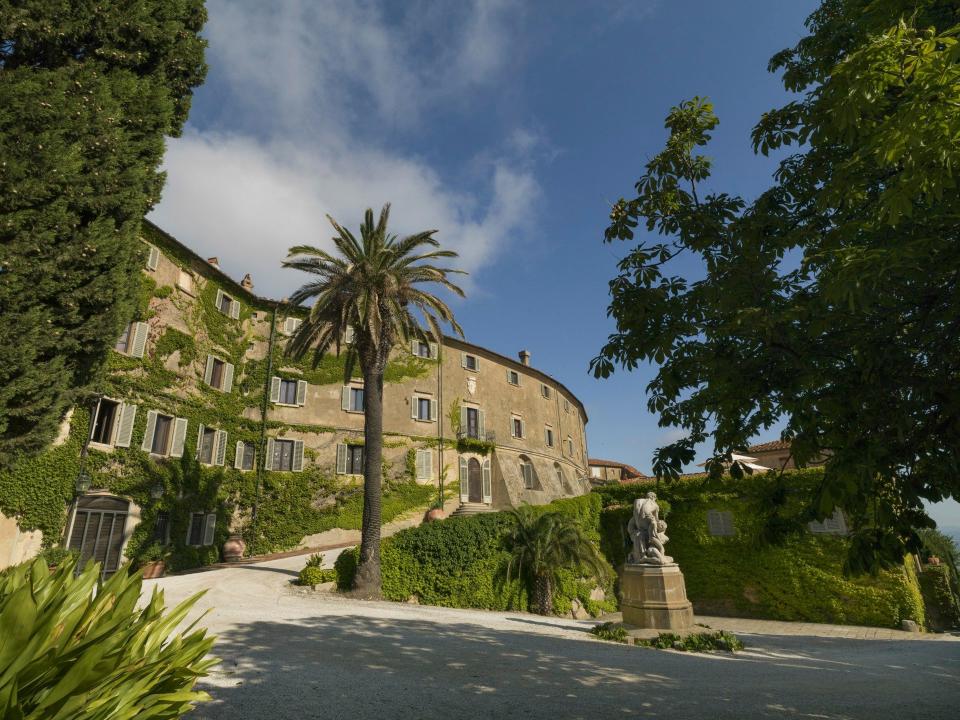
The couple separated in 2015 and divorced in 2016, which entailed more buying and refurbishing for Manfredi’s new house, which he sold when he moved back to Italy, to the family castle, and to his flat in Florence. How did they choose what to keep or sell? ‘It is the children’s thing. We have gone through everything. I said, “Don’t get rid of things you adore. But anything that either you don’t like, or you are not particularly attached to, then we might as well sell.”’
Aliotto, 23, is in California studying for a masters in filmmaking, and Margherita, 21, is an undergraduate at Columbia reading liberal arts and English literature. ‘They’ve been brilliant, they’re happy and busy. I’m quite glad that they’re not here for the sale, which is strangely quite emotional. What struck me is that you are kind of dismantling a person when you are selling their things. And especially someone who did it as their life work, although Manfredi was not attached to things in some strange way. He loved acquiring them. But if someone liked what he liked and wanted to buy it, he was delighted because he was sharing.’ Indeed, he was planning the sale when he died.
Where did he find things? ‘Everywhere; I mean, he didn’t feel his most comfortable in the English countryside, but he loved going to Tetbury. He made friends with the shopkeepers and he’d come back with car-boot loads, and you’d go, “Where are those going to go?” But it could be a market in France. His taste was totally eclectic. At art fairs, ‘he knew everybody and wanted to look at everything. I don’t have much patience for that kind of thing. We went past this stall full of Church stuff and he stopped, and I said, “At least we can move past this.” And no, he decided he wanted to collect chalices or something. I said, “Please, let’s move on.” I got quite cross. Honestly it was unstoppable.’ The collection of Belgian chocolate pots, at least 50 of them, was in the dining room. ‘I just thought we were going to get swallowed up by them!’
Manfredi grew up in Florence and loved history of art ‘from the moment he knew how to speak. A teacher recognised this. They used to get taken around the Uffizi in different classes. He was allowed to go with every class,’ she says, laughing, ‘It was his soul, really. I used to joke, and the children too, that he was so hopeless about most things. Memory, nonexistent, but in history of art, he could remember everything. I was in an art gallery in Texas and he knew where the pictures came from, anywhere in the world, he would know its provenance, what artist it was. He was an expert in old masters, first and foremost, and he learnt about modern and contemporary later on. You could not fault him. He knew it back to front, inside out. I’ve not ever met anyone like that, ever. And so I respect that most things were bought for a reason and a knowledge of what they were.’
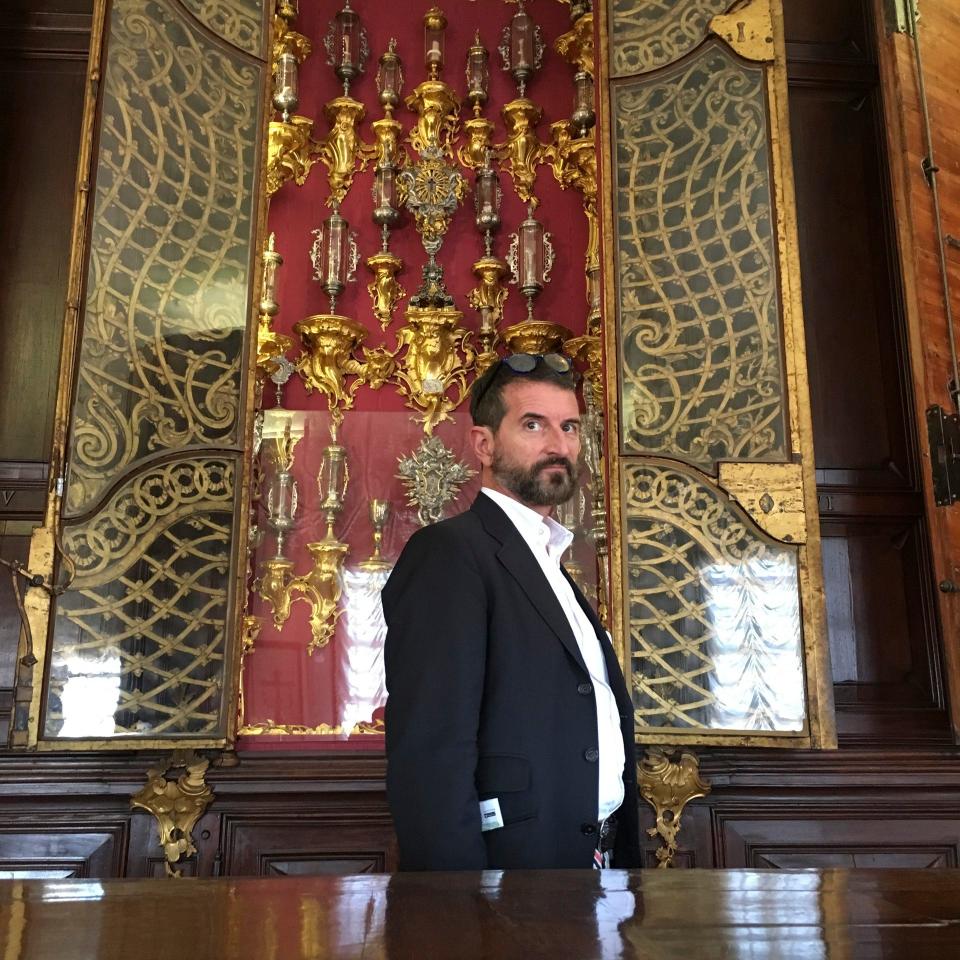
Manfredi and his siblings renovated the ancient castle in Italy. ‘His family do appear in Dante’s Inferno. They were political opponents to Dante. His ancestor Ugolino (1214-89) was locked up in a tower in Pisa and purportedly ate his grandchildren to stay alive. There’s an important statue in the Met in New York, and they have a replica of it at the castle.’ (This is Ugolino and his Sons by Jean-Baptiste Carpeaux; imprisoned and starving, he looks as though he is about to gobble up his offspring; there is also a bronze of the same in the Musée d’Orsay. Dante placed him in the lowest circle of hell, along with Judas.)
‘The family owned swaths of land below Pisa, and they had about 17 huge castles down the coast, until about 200 years ago.’Castagneto Carducci was one of those coastal castles, dating back about a thousand years; she shows me a picture of what is on one side a romantic defensive structure, while the other side looks on to the coast. In the Second World War, Nazis occupied the area – evidenced by bullet holes in some of the garden statuary. Manfredi’s parents moved back in the 1960s.
‘It had been completely shut up. They had rather wonderful terracotta flooring and that sort of thing, which was all buckled with damp and heat.’ Because of inheritance tax, the grandparents left the castle to their grandchildren. ‘They set about renovating it, and when I arrived there the first time, only part of it was usable. The rest was derelict old rooms with furniture shoved up. Now it’s rather amazing. Manfredi was going to live partly there, partly in Florence. It’s used for events, and the family use it in the summer. It’s still up and running, and now we’ve got to just find out what we’re going do with it.’
Dora, after St Mary’s, Ascot, followed by politics and philosophy at the University of Edinburgh, set up her own event management business. She worked for her father in New York, where he had ‘a business management company for artists including the Rolling Stones but also Joe Jackson and David Bowie’.
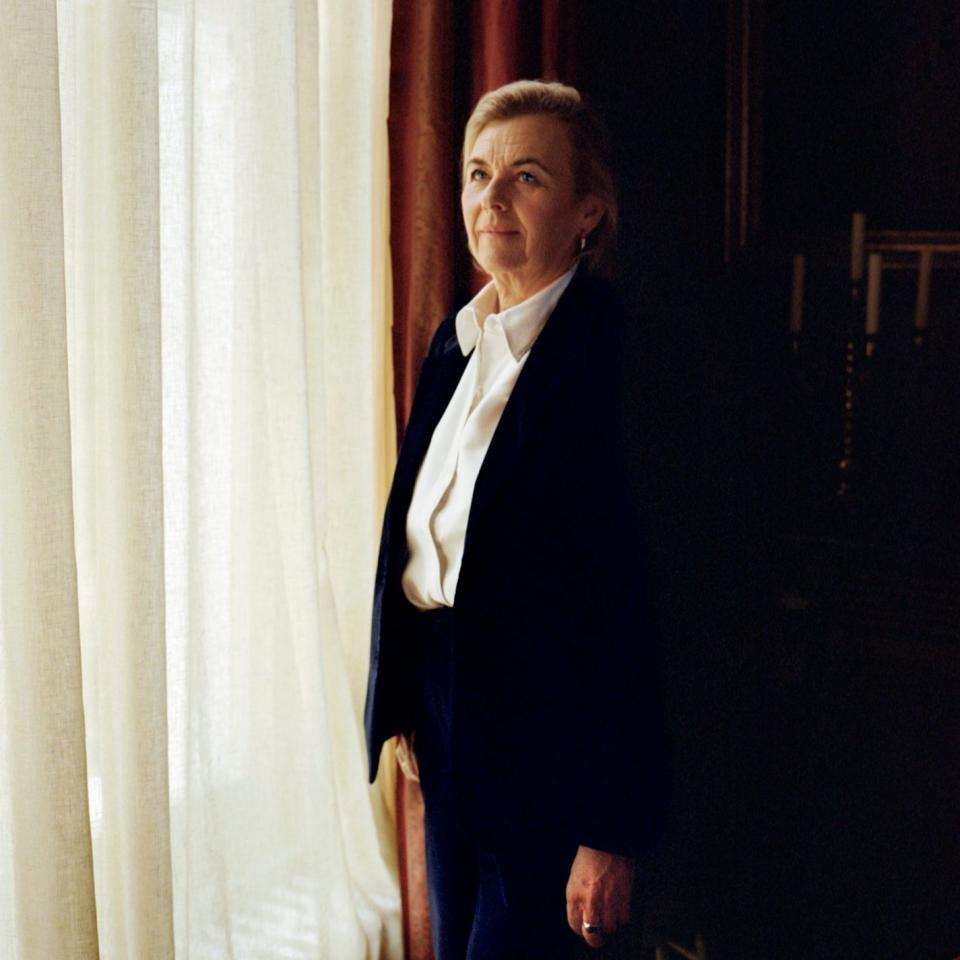
‘One of the jobs I had was when record companies owed royalties to artists; I had to check that they were giving them what they should. I used to trawl through microfiche. I had to audit the insurance policies the artists had because often they’d have multiple offices duplicating things. Odd training, really boring, but you know, in terms of like, accounting, I learnt: don’t ignore the detail. [I always think] what did we miss?’
‘I was on the road with the Stones, looking after VIP guests in the summer of 1990,’ she says. She was looking after British Army generals in Berlin, among others, watching the Stones’ show from the giant light tower. Among such adventures the party business began. There were parties for the Stones in New Orleans, a concert at the castle in Prague for the Prince of Wales, now King Charles, an NSPCC ‘dream auction’ at the Albert Hall. Now the Princess is working on a big mental-health initiative with the University of Oxford called BrainWaves, which both helps and researches mental health in the young. ‘We still need to raise more money because we’ve started it from scratch, but it’s now happening, we’ve got lessons in schools, we’ve got the research engine up and running.’
In the meantime, the della Gherardesca auction provides an enchanting glimpse into the life and tastes of one Europe’s most mesmeric connoisseurs.
Alchemy of Design: The Collection of Count Manfredi della Gherardesca is on 24 April (dreweatts.com)

